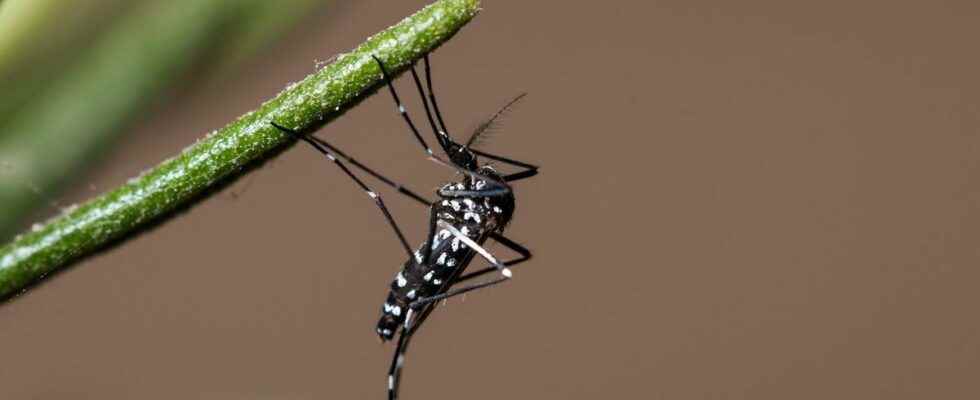Posted ,
Reading 2 mins.
A case of imported dengue has been reported in the city of Nîmes. How is this virus transmitted, should we fear a chain transmission, how to protect ourselves? The answers of Pr François Bricaire, infectiologist.
Panic in Nîmes, where a case of dengue has been identified. To cut short a potential chain of transmission of the disease, the Regional Health Agency (ARS) of Occitanie is conducting an investigation to determine the presence of tiger mosquitoes, vectors of this pathology, in a district of the city of Gard.
Several dengue fever subtypes
Dengue fever is a tropical disease transmitted by mosquitoes, especially tiger mosquitoes. There are different subtypes. “We speak of dengue 1, 2, 3 or 4” indicates Professor François Bricaire, infectiologist and member of the National Academy of Medicine.
To infect a person, the mosquito must carry the dengue virus. It then acts as a vector for the disease: it becomes infected by biting an infected person, during the period when the virus is present in their blood. He can then transmit it in turn during a subsequent bite.
No human-to-human contamination
The transmission is therefore only through the mosquito. “Once the person is infected, it is not contagious, neither by postilions nor by contact, the mosquito is necessary for the spread of the disease”confirms Professor François Bricaire.
“She will then develop a flu-like syndrome with fever, joint pain and fatigue, which will pass after a few days.s”.
On the hunt for mosquitoes
After the discovery of this case of imported dengue fever, the risk is therefore that mosquitoes bite this person and spread the disease. Tiger mosquitoes are particularly effective vectors, which bite, moreover, day and night.
The ARS is carrying out an investigation to determine the course of the person affected by dengue fever and seeks to identify the presence, or not, of mosquitoes in the area where the patient resides, with the aim of considering, if necessary, a mosquito control.
A risk of contamination “fairly low at this stage
Despite this research, the Regional Health Agency qualifies, for the moment, the risk of contamination “fairly low”.
This is not the first time that the ARS has been confronted with an imported case of dengue fever. Indeed, a few years ago, the same city of Nîmes had been confronted with two clusters, with the contamination of around fifteen people. However, observes Professor Bricaire, “the eradication of mosquitoes is a very effective measure to prevent the spread of the disease”.
Finally, remember that dengue fever is far from rare on a global scale. Indeed, the World Health Organization identifies approximately 50 million cases of dengue worldwide, each year.
